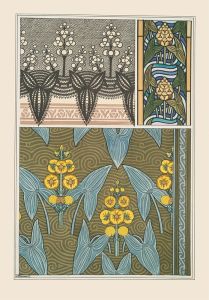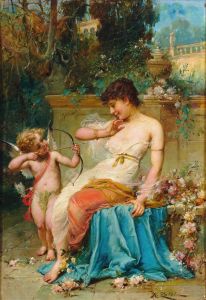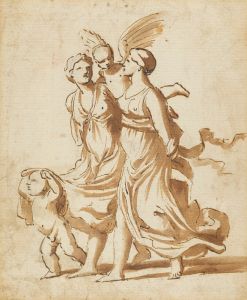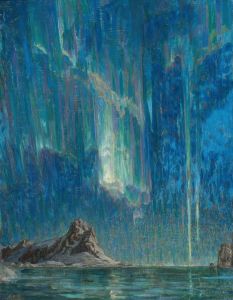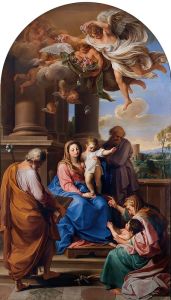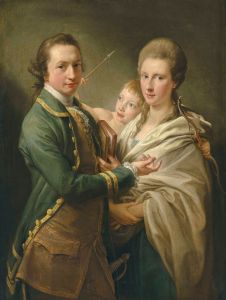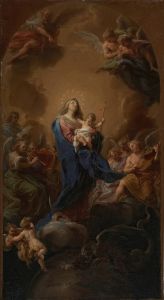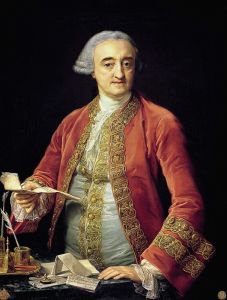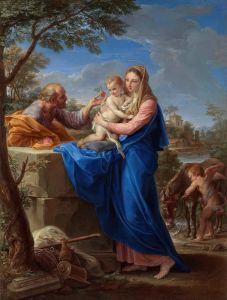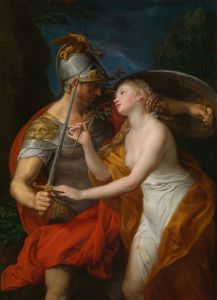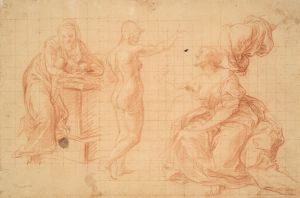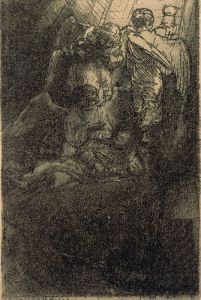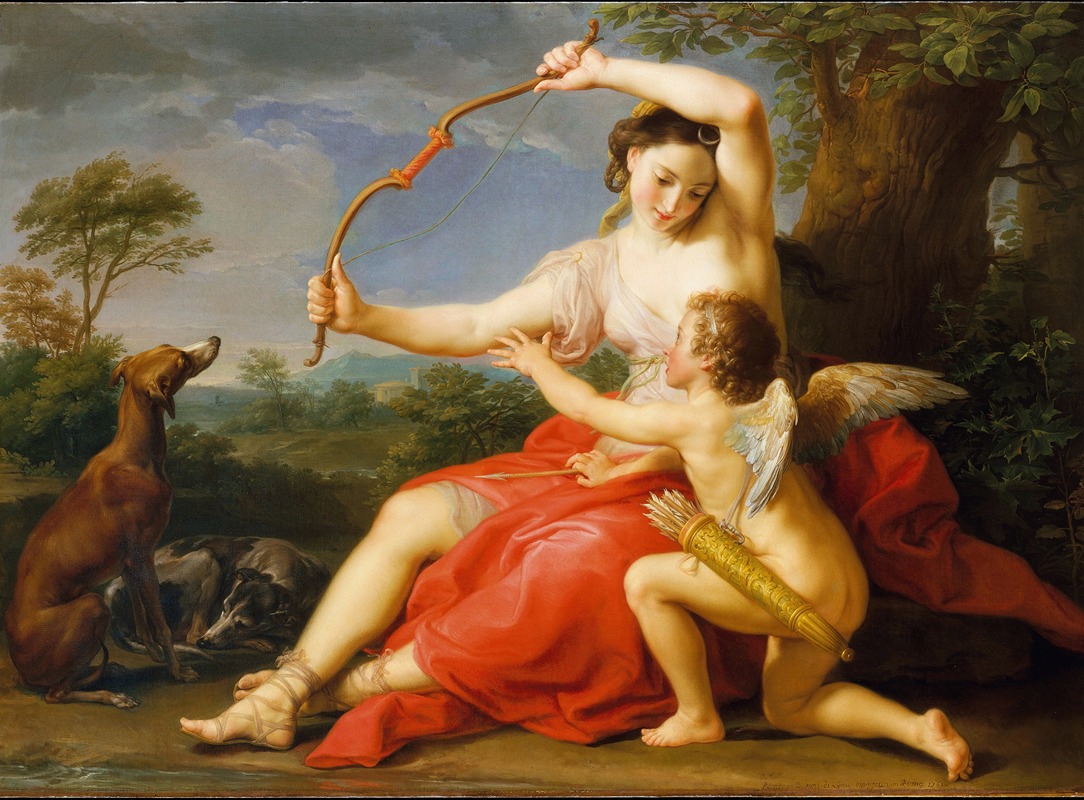
Diana and Cupid
A hand-painted replica of Pompeo Batoni’s masterpiece Diana and Cupid, meticulously crafted by professional artists to capture the true essence of the original. Each piece is created with museum-quality canvas and rare mineral pigments, carefully painted by experienced artists with delicate brushstrokes and rich, layered colors to perfectly recreate the texture of the original artwork. Unlike machine-printed reproductions, this hand-painted version brings the painting to life, infused with the artist’s emotions and skill in every stroke. Whether for personal collection or home decoration, it instantly elevates the artistic atmosphere of any space.
Pompeo Batoni's "Diana and Cupid" is a notable example of 18th-century Italian painting, showcasing the artist's skill in combining classical themes with the refined aesthetics of the Rococo period. Batoni, born in 1708 in Lucca, Italy, was one of the most celebrated painters of his time, renowned for his portraits and mythological subjects. His work often reflected the influence of classical antiquity, which was a significant source of inspiration during the Enlightenment.
"Diana and Cupid" depicts the Roman goddess Diana, known as Artemis in Greek mythology, who was the goddess of the hunt, the moon, and chastity. She is often portrayed as a young, athletic woman, embodying both beauty and strength. In this painting, Diana is accompanied by Cupid, the Roman god of desire, affection, and erotic love, known as Eros in Greek mythology. Cupid is typically represented as a winged child or young boy, armed with a bow and arrows, which he uses to inspire love in his targets.
The painting captures a moment of interaction between the two deities, a common theme in mythological art that allows for exploration of the dynamics between love and chastity, desire and restraint. Batoni's composition is characterized by its elegant lines, soft color palette, and the graceful rendering of figures, which are hallmarks of his style. The artist's attention to detail and his ability to convey texture and light contribute to the painting's lifelike quality.
Batoni's work was highly sought after by the European aristocracy, and he became particularly famous for his portraits of British Grand Tourists, who visited Italy as part of their cultural education. However, his mythological and religious paintings also garnered significant acclaim. "Diana and Cupid" exemplifies Batoni's ability to blend the narrative clarity of classical themes with the decorative elegance of the Rococo, appealing to the tastes of his contemporary patrons.
The painting reflects the broader artistic trends of the 18th century, where there was a renewed interest in classical mythology and history, driven by archaeological discoveries and the intellectual currents of the Enlightenment. Artists like Batoni played a crucial role in interpreting these themes for a modern audience, balancing historical accuracy with contemporary artistic sensibilities.
"Diana and Cupid" is housed in a collection that appreciates Batoni's contribution to art history, though specific details about its current location or provenance may vary. As with many works of this period, the painting serves as a testament to the enduring appeal of mythological subjects and the skill of artists who could bring these ancient stories to life with vibrancy and elegance.
In summary, Pompeo Batoni's "Diana and Cupid" is a distinguished work that exemplifies the artist's mastery of mythological themes and his ability to captivate viewers with his refined technique and classical sensibilities. The painting remains a significant piece within the context of 18th-century European art, reflecting both the cultural interests of the time and Batoni's individual artistic vision.






